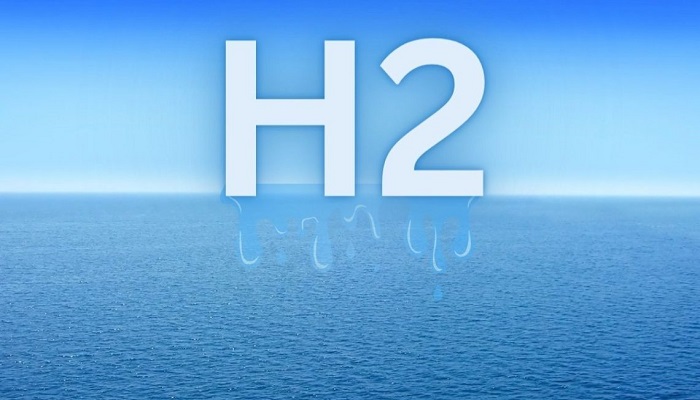With demands pertaining to global energy surging, there happen to be mounting challenges with regards to pollution and climate change, and the transition towards clean energy is indeed paramount.
Although nuclear, wind, and solar happen to be quite established alternatives to fossil fuels, hydrogen energy happens to be emerging as a potent contender that also does not create any carbon dioxide.
As per Songshan Lake Materials Laboratory, China’s professor Lifeng Liu, hydrogen happens to be a pivotal vector when it comes to the energy shift towards the sphere of carbon neutrality. It cannot just be used within the transportation sector but also happens to find a wider range of applications in certain hard-to-abate sectors such as steel, blends of ammonia and methanol, and refining of metals, which in a way also helps in meeting the net-zero targets of these sectors.
But the fact is that no matter how clean this kind of energy is, traditional methods of generating hydrogen by way of coal gasification as well as steam reforming happen to be environmentally harmful, which has in a way quite prominently undermined its capability.
The fact is that, fortunately, hydrogen can very well be produced by way of pure water, the molecules of which are made from oxygen and hydrogen, and that too in a much eco-friendlier manner by way of electrolysis. The process goes on to involve bringing water into contact with a positively charged electrode known as anode in which the undercharged molecules are broken into electrons as well as ions. The components thereafter travel across varied paths towards a negatively charged electrode-cathode, in which, among other by-products, pure hydrogen is formed.
As per Liu, renewable energy-driven water electrolysis has in a way been generally accepted to be a quite promising approach towards green hydrogen production, and numerous renewable + water electrolysis projects happen to be in the pipeline throughout many countries, but the shortage of freshwater may as well go on to become quite a bottleneck of large-scale rollout of water electrolysers in the years to come, specifically in Africa, wherein the EU happens to be planning to deploy 40 GW water electrolysers by the decade end.
The fact is that this kind of challenge went on to prompt Liu and his team to search for choices. In their study, which happened to be published in Advanced Functional Materials, they promoted a new method when it came to producing hydrogen by way of seawater, which, by the way, accounts for almost 97% of all the water reserves that are there on earth.
The real issue is that seawater contains prominent amounts of compounds such as potassium hydroxide and sodium chloride. These also go on to participate in the electrolysis process, hence elevating the energy consumption; however, they do not result in pure hydrogen production while leading to corrosion in terms of the electrolyzer’s components.
In order to overcome such hurdles, Liy along with his team went on to mix seawater with hydrazine, which is a molecule made up of hydrogen and nitrogen and is, by the way, known to significantly raise hydrogen generation efficiency. They also went on to coat electrodes with a foil that happens to be made of tellurium and platinum, which go on to act as catalysts when it comes to electrolysis, hence helping in the growth sans participating in the chemical reaction.
It is well to be noted that the electrolysis device goes on to show pretty promising results: it maintained catalysis at a very low voltage between electrodes as compared to what conventional seawater catalysis requires, reducing unwanted side reactions, increasing the dependability of the electrolyzer, and also safeguarding corrosion.
Furthermore, the new device went on to generate more energy than it actually consumed, thereby making the production of hydrogen self-sustaining.
As explained by Liu, the most prominent findings in their study are that by way of rational design, seawater electrolysis can go on to take place in a spontaneous way, i.e., be self-powered, which means that if one happens to have seawater, they can generate hydrogen out of it by way of using the devices that they propose sans the external electricity input.
Their devices can go on to significantly decrease consumption pertaining to water electrolysis, hence signaling prominent potential in terms of lowering the cost of hydrogen production. Moreover, their devices enable operations at lower present densities, therefore helping much larger functional flexibility pertaining to the electrolyzers, which happens to be also a technical barrier when it comes to real world operation.
In spite of such very impressive results, researchers go on to admit that their electrolysis method happens to be having some lacunas and the scientists still have to kind of overcome numerous fundamental challenges to achieve clean hydrogen production along with it.
Apart from this, the usage of hydrazine oxidation reactions happens to hold the key in terms of reducing electrolysis energy consumption.
But the fact remains that hydrazine happens to be highly toxic with their large-scale usage for water electrolysis can go on to pose some sort of risks, both to the operators as well as the environment. And hence, it is indeed essential to look for an optional molecule in terms of substituting hydrazine.





































